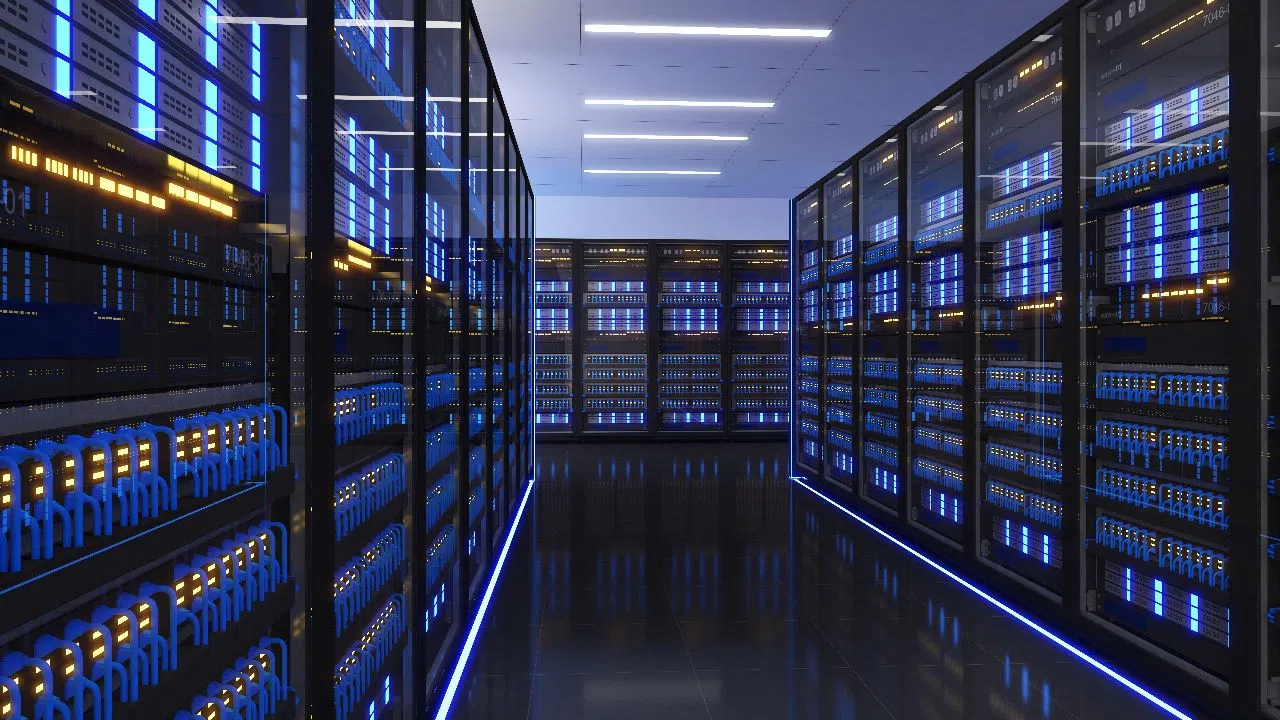
One Data Centerin simple terms, is a physical installation that accommodates information technology (IT) equipment such as servers, storage systems, network infrastructure and other tools necessary for the functioning of a computing infrastructure. These centers are essential for supporting a wide range of services, from cloud operations and AI training to running enterprise applications.
History and evolution of Data Centers
The first data centers emerged in the 1940s, with the emergence of mainframes, such as the ENIAC, the first large-scale electronic computer. These occupied entire rooms, due to the size of the components and the power and cooling needs. In the 1990s, technology evolved, and microcomputers emerged, which drastically reduced the space needed, and data centers began to be seen as dedicated rooms to house these new servers.
Also read
7 interesting facts about the ENIAC, one of the most important computers of all time
The evolution of data centers has been made possible by important technological advances, such as virtualization and the emergence of hyperscale architectures. Virtualization allowed the separation of hardware and software resources, making it possible to use a single physical server to run multiple virtual machines, which drastically increased the efficiency and flexibility of data centers.
Hyperscale architectures, developed by large technology companies, have allowed exponential growth in processing and storage capacity, enabling the creation of large installations capable of supporting millions of simultaneous users.
In the 2000s, cloud computing revolutionized the traditional concept of data centers, allowing remote access to computing resources on demand, via the internet. This data center model, called “cloud”, offered more flexibility and scalability for companies that needed to quickly grow or reduce their IT resources.
Companies like Netflix, Airbnb, Spotify, and Slack have benefited greatly from cloud computing, as they have been able to quickly expand their infrastructure to serve millions of users around the world, without needing to invest in large physical facilities. For example, Spotify has used cloud computing to manage and distribute audio content to a growing user base, while Slack has leveraged the flexibility of the cloud to deliver its team communications services in a scalable way.
Additionally, companies like Uber and Lyft have also used the cloud to manage growing demand for their transportation services, enabling real-time monitoring of trips and payments. Amazon, with AWS, not only benefited from the cloud, but also became one of the leading providers of cloud infrastructure to other companies, allowing startups and large corporations to scale their businesses quickly and efficiently. These examples illustrate how cloud computing has transformed several sectors, allowing fast, efficient growth without the high costs of physical infrastructure.
Components of a Data Center

A modern data center is made up of four main infrastructures:
- Support Infrastructure: Includes power supply, cooling and security systems. Redundant power sources, such as UPS (Uninterruptible Power Supply) systems, ensure that services continue to function even in the event of power grid failures. Furthermore, cooling systems such as chillers and liquid cooling are used to maintain an ideal temperature and prevent equipment from overheating. Humidity control and fire fighting systems, in addition to physical and logical security, are essential elements to guarantee the stability and uninterrupted operation of the services offered by data centers.
- Computing Infrastructure: Includes servers that can be in racks, blades, or mainframes. Blade servers, for example, take up less space and consume less energy, while mainframes are used in applications that require high performance.
- Storage Infrastructure: In data centers, there are different storage systems such as DAS (Direct Attached Storage), NAS (Network Attached Storage) and SAN (Storage Area Network). Each of these systems is designed to meet specific data storage and sharing needs, ensuring greater security and accessibility.
- Network Infrastructure: The network is responsible for connecting servers, storage systems and also ensuring communication with the outside world. For this, devices such as routers, switches, optical fibers and firewalls are used, each with specific functions to ensure the efficiency and security of the network.
- Routers: They are responsible for directing data traffic between different networks, ensuring that information reaches the correct destinations efficiently.
- Switches: Connect devices within the same network, allowing fast and secure internal communication between servers and storage systems.
- Optical Fibers: They are used to transmit data at high speed and with low latency, physically connecting different parts of the data center and also allowing communication with external networks.
- Firewalls: Protect the network against unauthorized access and possible cyber attacks, creating security barriers that monitor and filter incoming and outgoing traffic.
This combination of devices ensures both connectivity and data security, allowing the data center to operate in a stable and secure manner.
Types of Data Centers

There are different types of data centers, each designed for different purposes and needs:
- Corporate Data Centers (On-premises): These are those owned by the company itself and located on its premises. They provide greater control over data security, but have high maintenance costs.
- Data Centers Colocation: The facilities are shared by several companies, which rent space for their equipment. This model is popular for companies that want a safe environment with good infrastructure, but without having to invest in all the construction and maintenance costs.
- Cloud Data Centers: They are offered by cloud service providers such as AWS, Google Cloud and Microsoft Azure. These data centers are accessed remotely, and companies only pay for the use of resources, allowing for flexibility and scalability.
- Hyperscale Data Centers: These data centers have a large processing and storage capacity and are used by large technology companies to support vast amounts of data and simultaneous access. Examples include Amazon, Google, and Microsoft data centers.
Importance of Data Centers in the modern world

Data centers are the heart of the modern digital world. They ensure that services such as social networks, banking applications, streaming platforms, e-commerce, among others, are always available and functional.
Sectors such as finance and healthcare rely heavily on data centers to ensure the security, availability and processing of large volumes of data. In the financial sector, data centers support real-time transactions (like Pix) and guarantee the security of the banking data of millions of customers. In the healthcare sector, they store electronic medical records, support communication between hospitals, and enable the use of AI technologies for accurate diagnoses.
With the increasing digitalization of business and the rise of technologies such as Artificial Intelligence and the Internet of Things, the demand for scalable and secure computing solutions makes data centers increasingly indispensable.
Furthermore, modern data centers have invested in sustainability, using renewable energy and efficient cooling techniques, aiming to minimize environmental impact and ensure business continuity in a more responsible way.
Conclusion

In the future, data centers are expected to increasingly adopt artificial intelligence (AI) technologies to optimize their operation and maintenance. AI can be used to predict failures, improve energy efficiency and optimize resource use, enabling smarter and more proactive management. Furthermore, automation with AI could reduce the need for human intervention, minimizing errors and increasing system reliability.
A data center is much more than just a place that houses servers. It is a complex and vital infrastructure to sustain the digital age in which we live. From ensuring data security to enabling scalability of operations, data centers are essential for companies to focus on their core activities, while being confident that their data and systems are secure and accessible.
Source: https://www.hardware.com.br/artigos/o-que-e-um-data-center-2/


